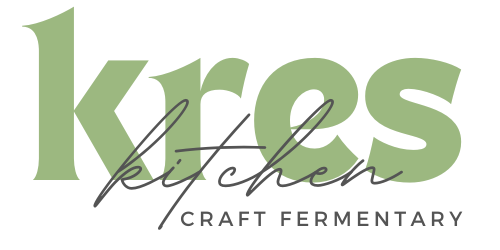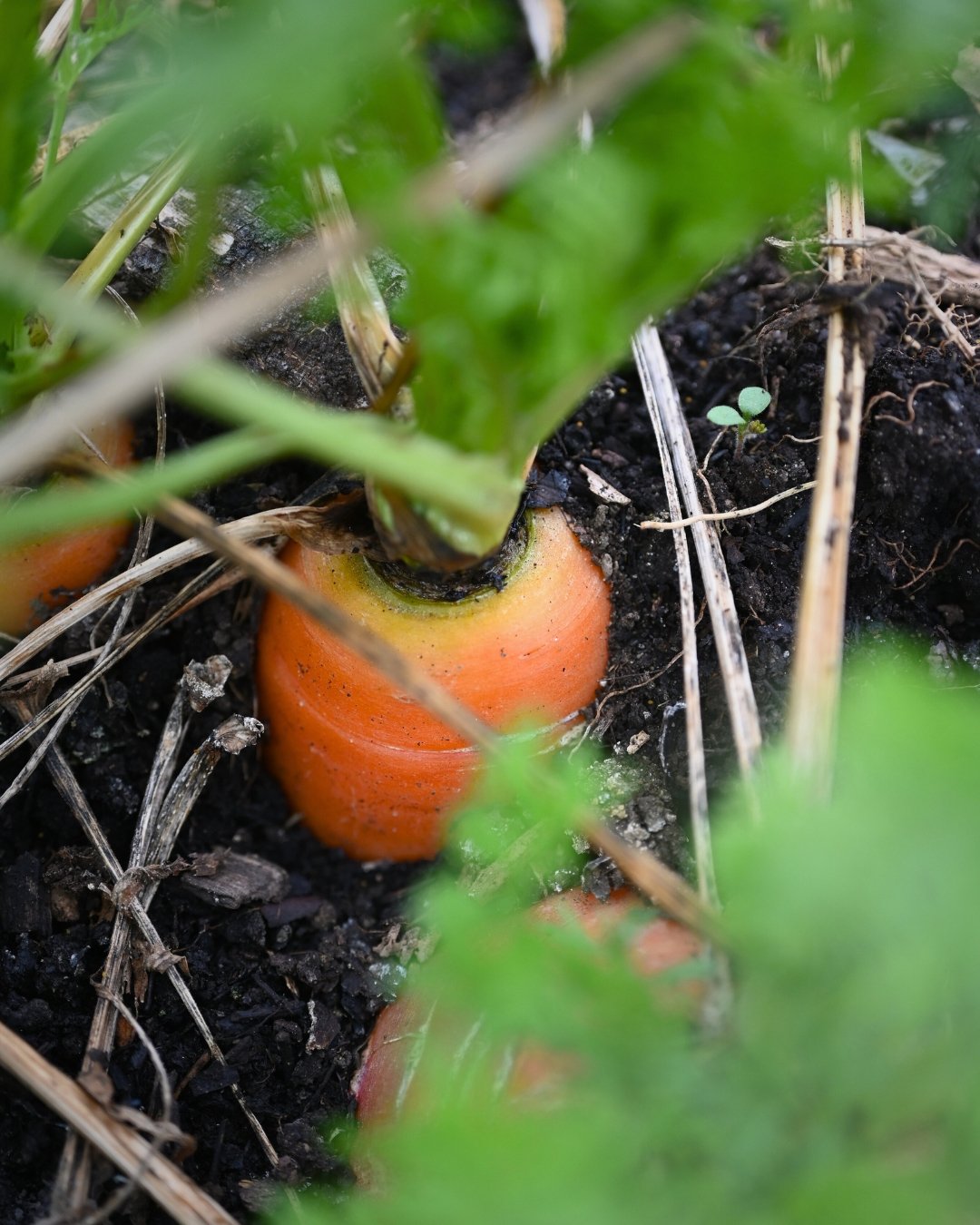Soil, Seasons and Style of Cultivation
Kres Kitchen “Three S’s” for driving Quality and Flavor
Ongoing use of synthetic fertilizers and high-yielding (but lower quality) crop varieties are destroying a lot things - including our palate. Somehow we’ve learned to accept bland and blah; low quality fruits and vegetables that don’t taste very good and don’t offer much in the way of nutrition. The simple truth is that nourishing foods with BIG FLAVOR do not come from depleted soils or modern lab-innovations. The path to reclaiming quality and flavor can be found in nature - where the provenance of food has been perfected over thousands of years.
Soil matters. There’s a big difference between a carrot grown in healthy living soil and one that is grown in dirt “hiked-up” on synthetic fertilizers for a faster harvest. Healthy soil is teaming with biological diversity known in regenerative farming as the Soil Food Web. This food web is comprised of various populations of microorganisms that cycle nutrients in direct response to plant requirements. High quality soils are replete with the resources required to synthesize essential plant nutrients on-demand. This means less work for me, the grower, because I can count on nature to manage fertility 24x7. I know that if I do a good job nurturing my soil, my soil will nurture my plants. There is no better way.
In Ohio, and in most places these days, rapid changes in weather conditions can cause chaos for growers who are unprepared. Row covers and overhead protection (high tunnels) won’t be enough. Irrigation won’t be enough. The ultimate differentiator: SOIL. Healthy living soil is more resilient to climate stressors because these grow spaces:
Aren’t chemically dependent on synthetic fertilizers.
Are less compacted allowing better oxygen diffusion, deeper root penetration, and optimal conditions for the proliferation of aerobic biota.
Have better water holding capacity to moderate changing weather conditions and to prevent runoff or accidental loss of organic matter.
Have more expansive mycorrhizal networks which perform as super highways for transporting water and nutrients over distances.
Provide an ideal habitat for one of the most biologically diverse and productive ecosystems on earth.
Yes, we’re obsessed with our soil - and proudly so.
Seasons matter. Summer carrots taste very different than carrots harvested during cold weather months (December to March/April in our climate). Root vegetables, like carrots, are sweetest in flavor after undergoing a process known as cold-sweetening; a natural survival technique where starches are converted to sugars to prevent freezing. These sugars are ultimately converted into lactic acid and umami flavors during the fermentation process. For sauerkraut varieties like Carrot & Caraway, I definitely prefer a cold-season harvest. By integrating these seasonal considerations into our production plan, we partner with nature to co-create the most delicious bold and briny flavors.
Another key point about seasonality: carrots harvested in July will have a different microbial ecology than carrots harvested in December. Living soil is dynamic which adds natural complexity to fermentation outcomes. So… shorter daylight hours, different precipitation types and amounts, cooler soil temperatures — all factors that contribute to subtle changes in the fermentative ecology. Aside from local freshness, we’re constantly reminded that microbial ecology is the ultimate creator of BIG FLAVOR in lacto-fermented foods. Growing and harvesting with the seasons expands our opportunities to explore authentic local flavors produced by diverse communities of gut-loving microbes.
Style of Cultivation matters. The heirloom and non-GMO seed varieties that we select, the biological soil mix we make onsite for seedling starts, the thermal compost we produce annually, the use of cover crops, the avoidance of chemical pesticides/fertilizers, the use of natural organic mulch (e.g. wood chips) over plastic (e.g. geotextiles), the complete departure from tilling our soils, and the ongoing nurturing of mycorrhizal networks; THIS is our way.
So yes, wholesome deliciousness begins in our soil. It is “in the growing” where a regenerative style of cultivation can systematically nurture our ecosystem by improving soil fertility and building ecological diversity. We embrace our NE Ohio seasons which provide natural pathways to exceptional flavors and culinary enjoyment.
Below is an illustration of a farm-to-fermentation cycle for our popular Carrot & Caraway Sauerkraut. Don’t let the simple ingredients fool you! Just cabbage, carrots, caraway, salt and nature’s wild cultures is all that’s needed to generate the most complex flavors and the most bioavailable nutrients. In a typical cycle, many of the outcomes anticipated for our ferments have been locked-in before we arrive at the professional kitchen… This is Kres Kitchen’s three S’s. This is our craft.
If you’re interested in learning more about the core fundamentals of regenerative cultivation, follow us on Instagram @insoilhealth where we post on our healthy soil initiatives and provide encouragement for others working to do the same.
Kraut on!
© 2025 Kres Kitchen LLC. All rights reserved.




